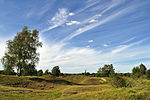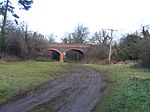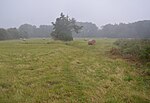St John the Baptist's Church, Barnack

The Church of St John the Baptist, Barnack is a Church of England parish church in the village of Barnack, now in the City of Peterborough unitary authority area of the ceremonial county of Cambridgeshire, England. Barnack was part of the Soke of Peterborough, an historic area that was traditionally part of Northamptonshire. Barnack is 3.5 miles (6 km) south-east of Stamford in Lincolnshire. The church is a Grade I listed building.The church, dedicated to John the Baptist, is noted in particular for its Anglo-Saxon tower to which was added a spire of circa 1200, possibly one of the earliest spires in England.In the north aisle is a large Romanesque sculpture of a seated Christ in Majesty that was discovered under the floor in 1931. Estimates of the date of the Christ vary widely, from the latter part of the 10th century to circa 1200; the Corpus of Romanesque Sculpture in Britain and Ireland settles on the late 12th century.Simon Jenkins gives the church four stars in his England's Thousand Best Churches (1999) and highlights as features the tower, the stiff-leaf font and the Christ in Majesty. The height of the surviving Saxon work in the tower is 55 feet (17 metres), topped by an octagon and spire of 59 feet high (18 metres), giving a total height to the base of the weathervane of 114 feet (35 metres).
Excerpt from the Wikipedia article St John the Baptist's Church, Barnack (License: CC BY-SA 3.0, Authors, Images).St John the Baptist's Church, Barnack
Main Street,
Geographical coordinates (GPS) Address External links Nearby Places Show on map
Geographical coordinates (GPS)
| Latitude | Longitude |
|---|---|
| N 52.6326 ° | E -0.407 ° |
Address
Saint John the Baptist
Main Street
PE9 3DN
England, United Kingdom
Open on Google Maps










